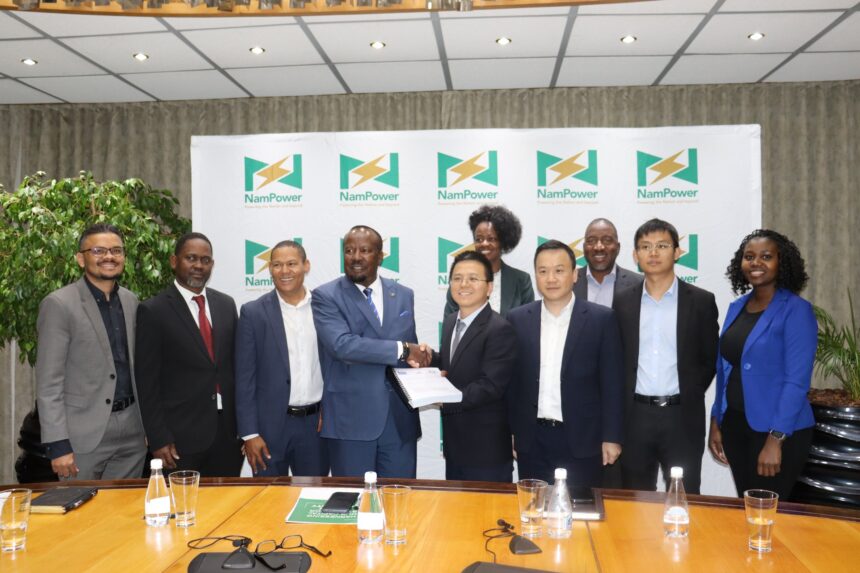Namibia’s power utility, NamPower, on Monday signed an engineering, procurement and construction contract with a Chinese joint venture for the 100MW Rosh Pinah Solar PV power plant.
The contract, signed between China Jiangxi International Economic and Technical Cooperation Co Ltd and China New Energy Development (Zhejiang) Co Ltd, is valued at over N$1.4 billion (about US$78 million).
KfW will cover almost 80% of the total costs, while NamPower is funding the remaining 20% from its balance sheet.
The project supports Namibia’s efforts to enhance its renewable energy infrastructure, and is expected to significantly contribute to the country’s electricity supply security and sustainability goals.
In addition, the project will create job opportunities for locals, as all as semi-skilled and unskilled labour must be sourced locally in line with the conditions.
Speaking at the signing ceremony, NamPower managing director Kahenge Haulofu said the 100MW PV plant and other infrastructure projects currently under construction are part of NamPower’s Integrated Strategic Business Plan for 2020-2025.
“The Rosh Pinah 100MW PV project is of great national importance, and will help the government accomplish its goals of ensuring electricity supply security and self-sufficiency as outlined in the national planning policies, such as the fifth National Development Plan and the National Integrated Resource Plan,” he said.
Additionally, the project will also aid in addressing and supporting the renewable energy commitments prescribed in the Renewable Energy Policy and National Energy Policy.
He added that the PV plant will also play a pivotal role in transitioning towards low carbon and environmentally sustainable energy system.
The total estimated project cost is N$1.6 billion.
“The investment into the Rosh Pinah 100MW PV project will contribute to managing and regulating future increases in electricity tariffs.
This will not only benefit individual consumers by lowering increases to their electricity bills but also contribute to the overall economic growth and environmental sustainability,” he said.
The construction period of the plant is estimated to last approximately 18 months.
At peak installation, close to 800 workers are anticipated to be on site.
Commercial operation date is anticipated for the second quarter of 2026.


